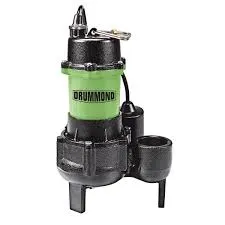English
- Afrikaans
- Albanian
- Amharic
- Arabic
- Armenian
- Azerbaijani
- Basque
- Belarusian
- Bengali
- Bosnian
- Bulgarian
- Catalan
- Cebuano
- Corsican
- Croatian
- Czech
- Danish
- Dutch
- English
- Esperanto
- Estonian
- Finnish
- French
- Frisian
- Galician
- Georgian
- German
- Greek
- Gujarati
- Haitian Creole
- hausa
- hawaiian
- Hebrew
- Hindi
- Miao
- Hungarian
- Icelandic
- igbo
- Indonesian
- irish
- Italian
- Japanese
- Javanese
- Kannada
- kazakh
- Khmer
- Rwandese
- Korean
- Kurdish
- Kyrgyz
- Lao
- Latin
- Latvian
- Lithuanian
- Luxembourgish
- Macedonian
- Malgashi
- Malay
- Malayalam
- Maltese
- Maori
- Marathi
- Mongolian
- Myanmar
- Nepali
- Norwegian
- Norwegian
- Occitan
- Pashto
- Persian
- Polish
- Portuguese
- Punjabi
- Romanian
- Russian
- Samoan
- Scottish Gaelic
- Serbian
- Sesotho
- Shona
- Sindhi
- Sinhala
- Slovak
- Slovenian
- Somali
- Spanish
- Sundanese
- Swahili
- Swedish
- Tagalog
- Tajik
- Tamil
- Tatar
- Telugu
- Thai
- Turkish
- Turkmen
- Ukrainian
- Urdu
- Uighur
- Uzbek
- Vietnamese
- Welsh
- Bantu
- Yiddish
- Yoruba
- Zulu
Telephone: +86 13120555503
Email: frank@cypump.com
Sep . 10, 2024 06:52 Back to list
Sewage Ejector Pump Replacement Services | Fast & Reliable Solutions
Understanding Sewage Ejector Pump Replacement
A sewage ejector pump plays a critical role in the effective management of wastewater and sewage in residential and commercial buildings. These pumps are primarily responsible for moving sewage from lower levels, such as basements or lower floors, to the main sewer line. Over time, like any mechanical device, sewage ejector pumps can wear out or fail, necessitating their timely replacement. Understanding when and how to replace these pumps is essential for maintaining a functional and sanitary environment.
Signs Your Sewage Ejector Pump Needs Replacement
Identifying the signs that your sewage ejector pump requires replacement is crucial. Common indicators include unusual noises, such as grinding, rattling, or humming, which can suggest motor issues. Frequent cycling on and off, known as short cycling, can indicate problems with the float switch, while continuous running may hint at mechanical failure or clogging. Additionally, if you notice sewage backups, foul odors, or puddles forming around the pump, these are clear signs that it’s time to investigate further.
The Replacement Process
When replacing a sewage ejector pump, it’s vital to follow a systematic process. First, ensure safety by disconnecting the power supply to prevent any electrical hazards. Next, remove the access cover and carefully take out the old pump, noting the plumbing connections and electrical wiring. It can be beneficial to take photos during this process for reference during installation.
sewage ejector pump replacement

Once the old pump is removed, compare the new pump to ensure it matches the necessary specifications, including horsepower, capacity, and discharge size. Before installing the new pump, clean the sump pit and inspect the float switch and check valve. It’s essential to ensure that there are no obstacles that could impede the pump's operation.
After preparing the pit, install the new pump by connecting it to the existing plumbing and electrical systems. Ensure that all connections are secure and properly sealed to prevent leaks. Finally, restore power to the pump and test its operation thoroughly to ensure everything works correctly.
Regular Maintenance
Once your new sewage ejector pump is in place, regular maintenance is crucial to prolong its lifespan and ensure consistent performance. Periodically check the pump for any debris that may have accumulated in the sump pit. It’s also wise to schedule professional inspections every few years to assess the pump's performance and address any potential issues before they become significant problems.
Conclusion
Replacing a sewage ejector pump may seem daunting, but with the right knowledge and careful attention to the process, it can be done effectively. Recognizing the signs of pump failure, understanding the replacement procedure, and committing to regular maintenance will help ensure that your sewage system functions efficiently, safeguarding your property and ensuring a healthy environment. Whether you choose to tackle this project yourself or hire a professional, a well-functioning sewage ejector pump is essential for effective wastewater management.
-
ISG Series Vertical Pipeline Pump - Chi Yuan Pumps | Advanced Engineering&Industrial Efficiency
NewsJul.30,2025
-
ISG Series Pipeline Pump - Chi Yuan Pumps | High Efficiency, Energy Saving
NewsJul.30,2025
-
ISG Series Vertical Pipeline Pump-Chi Yuan Pumps|High Efficiency&Reliable Performance
NewsJul.29,2025
-
ISG Series Vertical Pipeline Pump|High Efficiency&Low Noise
NewsJul.29,2025
-
ISG Series Vertical Pipeline Pump - Chi Yuan Pumps Co., LTD.|High Efficiency, Energy Conservation, Low Noise
NewsJul.29,2025
-
ISG Series Vertical Pipeline Pump-Chi Yuan Pumps Co., LTD.|High Efficiency&Energy-Saving
NewsJul.29,2025










